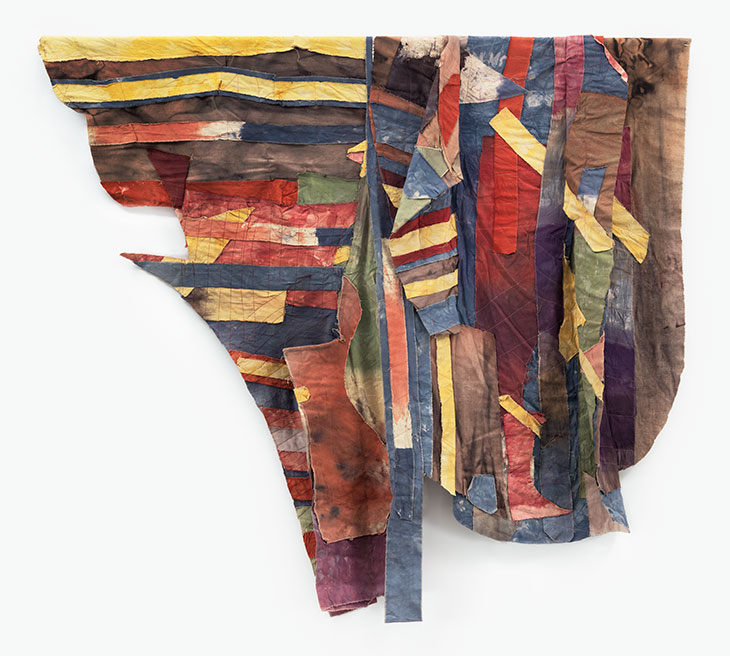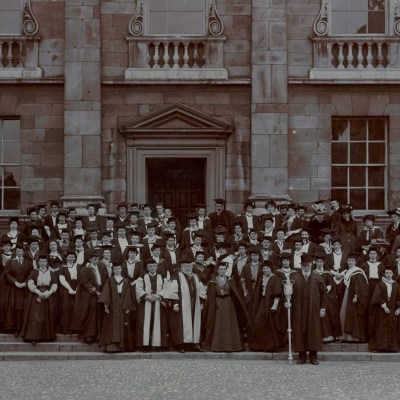Once, the American minimalist artist Carl Andre went to dinner at the home of British artists Liam Gillick and Sarah Morris. He had a bit to drink before he dismissed Morris’s stained-glass-like abstractions, saying: ‘The trouble with people like you is you’re only interested in skirt lengths.’ Morris bit back: ‘Well that must be nice for you, because your lasting contribution to history has been kitchen design.’ Their squabble, which Gillick recounted in a lecture in 2010, took as its premise the tired notion that serious art shouldn’t in any way resemble fashion, decor, or interior design. But, with her jab, Morris struck on something disturbingly accurate: while patterns, florals, brocades and other ornamental flourishes have long been dismissively labelled ‘decorative’, the current dominant Western aesthetic for everything – dishes, bookshelves, floor tiles – is essentially a watered-down spin on modernist purity. Interior-design blogs feature raw concrete paired with raw wood alongside headlines such as ‘Minimal, Modern Ode to Architecture’. Little did theorist Adolf Loos know when in 1901 he wrote ‘Freedom from ornament is a sign of spiritual strength’ that our strength would come to feel almost kitsch.
In this context, the work in MOCA’s delightful exhibition ‘With Pleasure: Pattern & Decoration in American Art 1972–1985’ may look more rebellious and perhaps timely than it did when it was made in the 1970s and ’80s. According to the press release, the show is the ‘first full-scale scholarly survey’ of this movement; and indeed, while the Hudson River Museum hosted a survey in 2007, and the Musée d’Art Moderne et Contemporain in Geneva and the Ludwig Forum in Aachen opened shows in 2018, no major US museum has taken on ‘P&D’, as it has been called, so comprehensively. This is not because, as curator Anna Katz aptly points out in her catalogue essay, the movement was ignored in its time. Its artists exhibited widely and found champions in curators, gallerists and critics, but never received the serious treatment that establishment survey texts or major museum exhibitions represent. Yet if P&D artists persisted just off centre of the mainstream, in part this was because they actively questioned and defied the mainstream canon – and this defiance must be remembered, even as that canon threatens to fold them in.
In 1978, P&D artists Valerie Jaudon and Joyce Kozloff published their funny, cutting essay ‘Art Hysterical Notions of Progress and Culture’ in the feminist journal Heresies, systematically debunking myths of Western, modernist ‘purity’, and asserting the activist consciousness behind their own pattern-heavy work: ‘Since the art experts consider the “high arts” of Western men superior to all other forms of art, those arts done by non-Western people, low-class people and women are categorized as “minor arts”, “primitive arts”, “low arts”, etc.’
Both artists are well-represented in ‘With Pleasure’: Jaudon’s Mineral Wells (1980), an elegant, tan-on-black meditation on Far Eastern patterning, executed with a precision that conjures geometric abstraction; Kozloff’s Striped Cathedral (1977), an ambitious 15ft-long painting loosely inspired by the Romanesque-gothic cathedral Orvieto, but with Islamic decorative motifs worked into the stripes and arches that make the canvas look like it’s vibrating.
Mineral Wells (1980), Valerie Jaudon. Photo: Zak Kelley. © 2019 Valerie Jaudon/Licensed by VAGA at Artists Rights Society (ARS), NY

Cynthia Carlson’s installation Tough Shift for M.I.T. (1981), originally installed at the Massachusetts Institute of Technology’s Hayden Gallery, exhibits its own brand of defiance – framed paintings of botanically precise yet whimsically rendered flowers, on top of paintings of framed flowers, on top of flowers painted directly on coloured walls. At the time, this ambitiously feminine take on botany must have poked at patriarchal smugness; but now, when MIT has recently faced scrutiny over its acceptance of a donation from the convicted sex offender Jeffrey Epstein, it still feels soundly provocative. In the exhibition, Carlson’s installation shares space with a quartet of ‘Beaux’ works by the late Ree Morton, including ‘Beaux Chair’ (1975), a blue painted wood stool, its feet wrapped in a blue cloth, its seat decorated with a rose and a big yellow bow with green polka dots. Morton made the cloth, rose, and bow with her signature Celastic, a mouldable, plastic fabric that she manipulated in such a way that her works always looked mischievous, snug in their slapdash-seeming volatility.
Morton – who died in a car accident in 1977 – and Carlson knew each other well, and spoke often when Morton was working with Celastic and Carlson using cake frosters to make three-dimensional wall paintings. Asked in 2015 which of them thought of working in this manner first, Carlson answered: ‘I don’t think we thought that way.’ This aspect of dialogue and information-sharing is central to the ethic of the P&D movement, its practitioners united in their defiance of an exclusive, competitive version of the art world.
Striped Cathedral (1977), Joyce Kozloff. Photo: eeva-inkeri, New York; courtesy the artist and DC Moore Gallery, New York

P&D coincided with the growth of the feminist art movement, and its artists largely identified as feminists – 28 of the 45 artists in ‘With Pleasure’ are female, a significant number for an exhibition of art from an era in which women artists had much less visibility than today. The centrepiece of the first gallery is an epic 12-ft paint-and-fabric collage of a Barcelona fan by Miriam Schapiro, co-founder of the Feminist Art Program at California Institute of the Arts. Emma Amos, who is not usually associated with P&D and has been outspoken about her feeling that second-wave feminism did not adequately embrace women of colour, has contributed to the show an ephemeral tapestry called Out in Front (1982), in which two female figures emerge out of the stripes of the fabric and catapult their way towards the edge of the picture plane.
Untitled (1975), Al Loving

As its title implies, ‘With Pleasure’ overflows with sensual provocations: Kim MacConnel’s painted furniture, untidily exuberant in their execution; Mary Grigoriadis’s loud, swirling yet perfect shapes bursting towards the edges of raw linen canvas; a lush, irregular panel by Franklin Williams, with caterpillar shapes surrounded by painted, string-like tentacles and real yellow yarn protruding from the surface like fur. Al Loving’s stitched-together strips of painted fabric hang loosely, like a still-regal, hand-me-down coat of many colours.
None of the top blue-chip collectors lent to this show; most lenders were smaller figures, including Thomas Solomon, son of the dealer Holly Solomon, who championed the movement. While Pace now represents Sam Gilliam, who has one work in the exhibition, most P&D artists do not have prominent galleries. This is to their credit. They set out to challenge value systems that privileged one kind of aesthetic over others, and in doing so, did not insert themselves into the collections of the art world’s one per cent. The model their approach provides feels especially inspiring at a moment when artists are again refusing to accept art-world class structures and the allegiances of power brokers (consider the museum unionisation efforts, and the protests that recently forced Warren Kanders from the Whitney’s board), and refusing to participate in what Kozloff and Jaudon once called ‘the myth that high art is for a select few’.
‘With Pleasure: Pattern and Decoration in American Art, 1972–1985’ is at the Museum of Contemporary Art, Los Angeles, until 11 May 2020.



